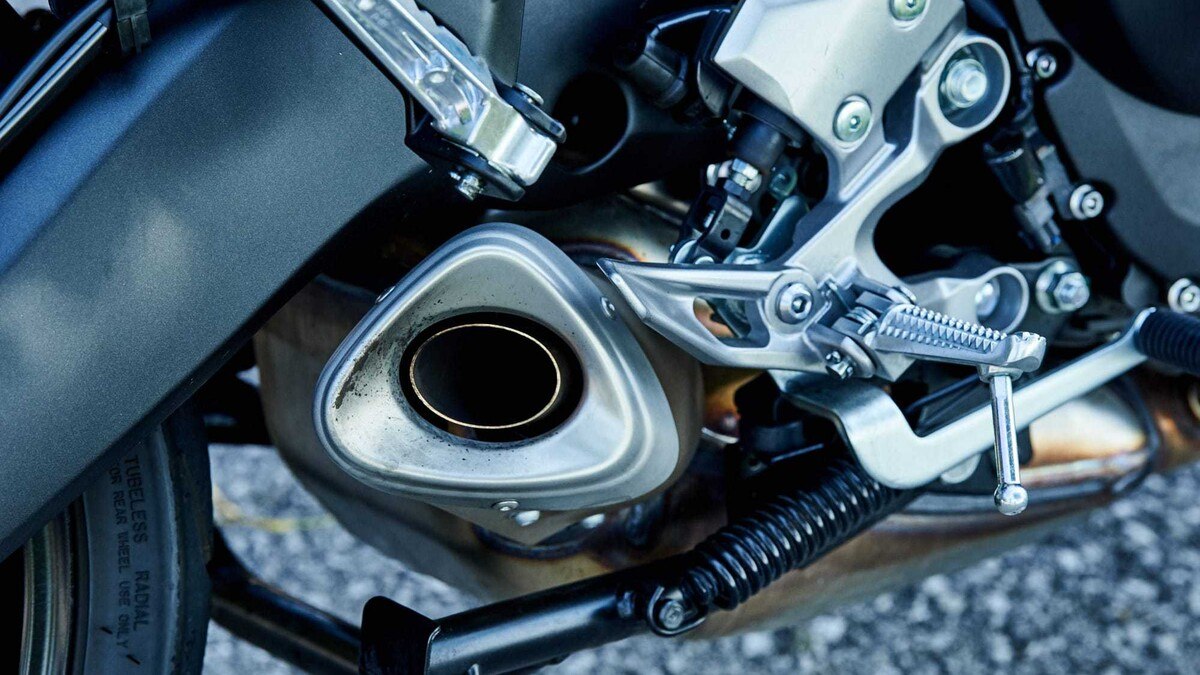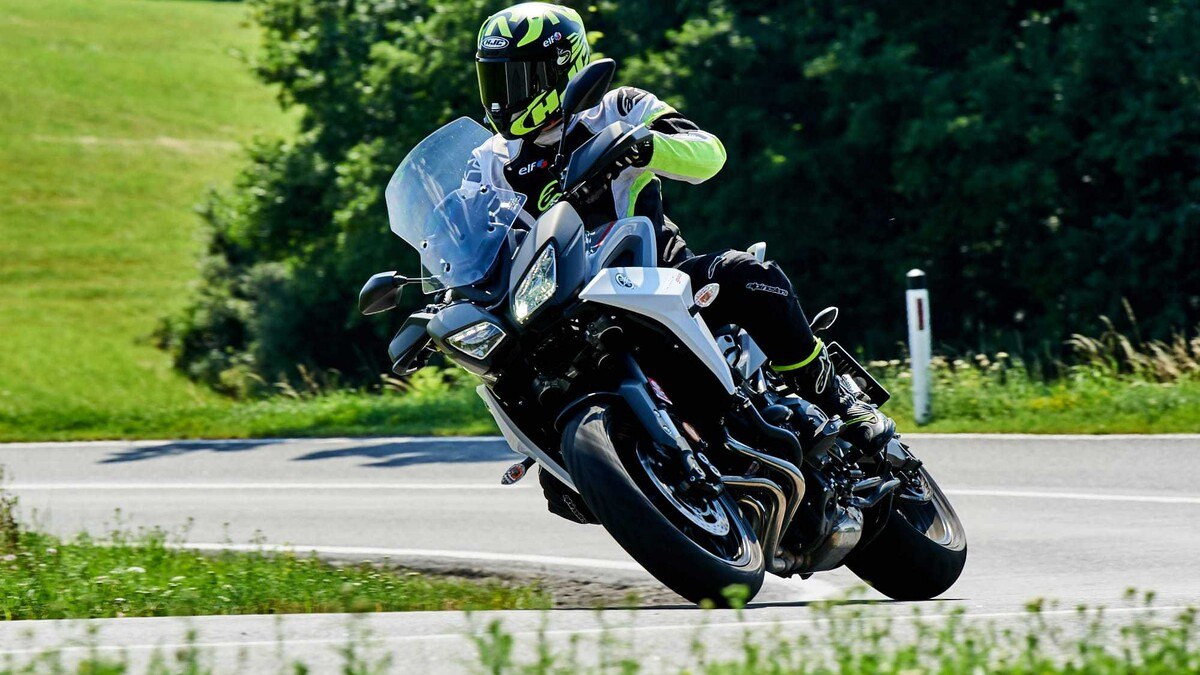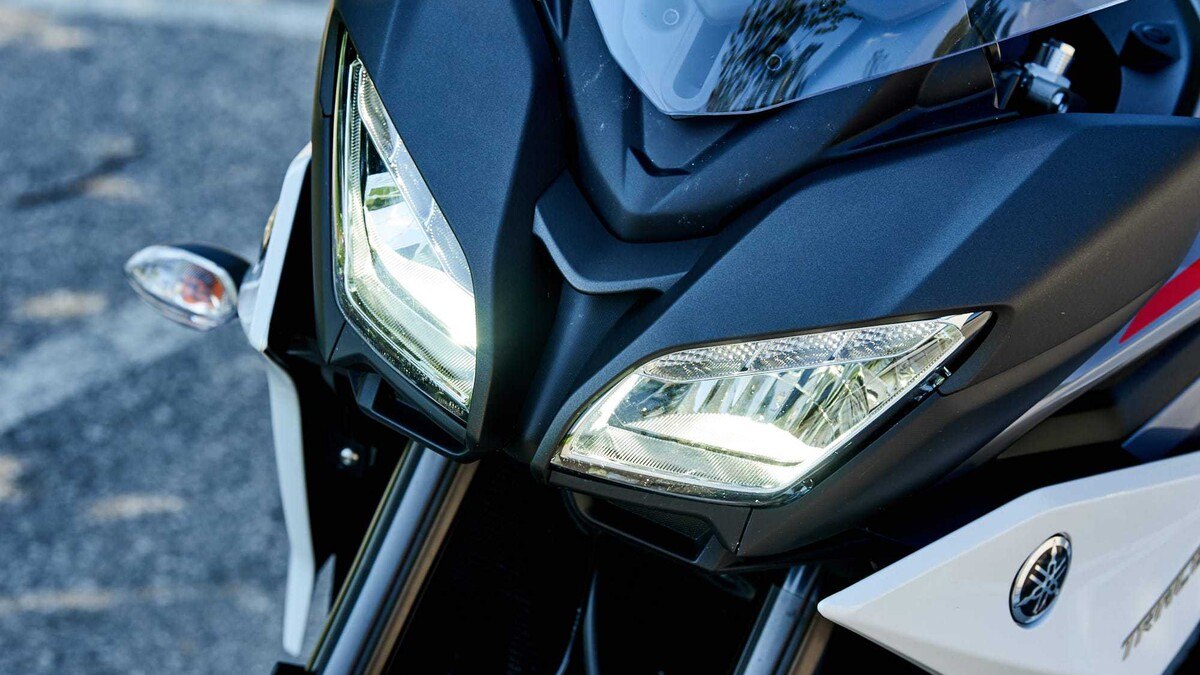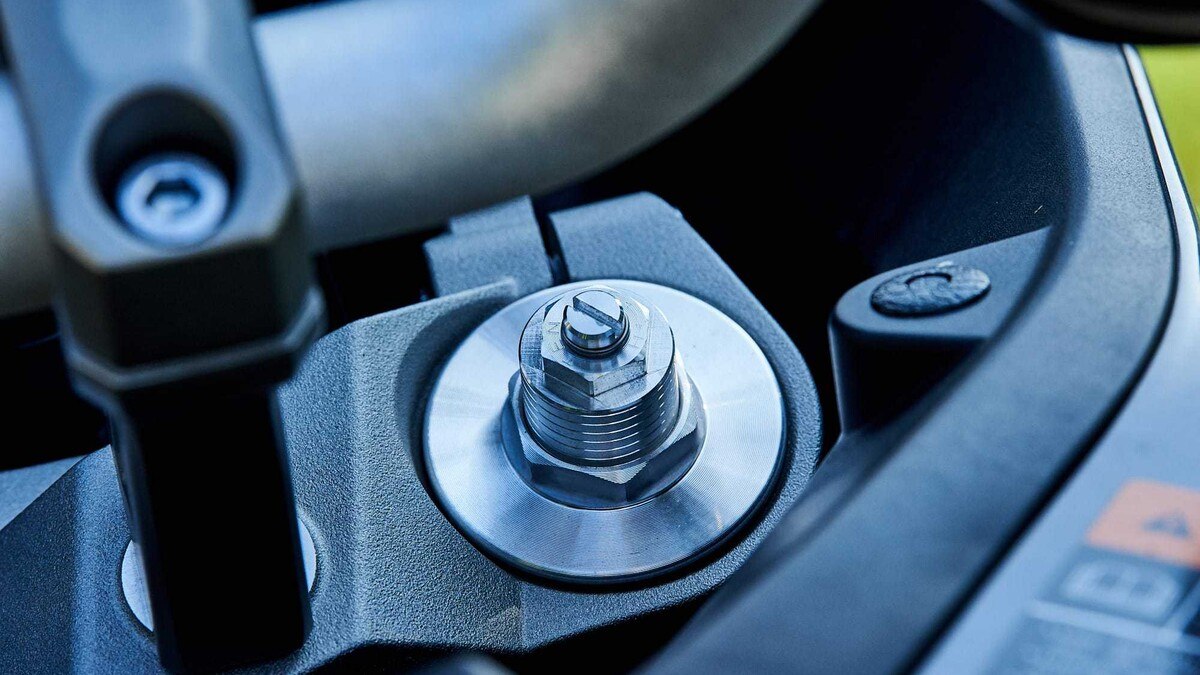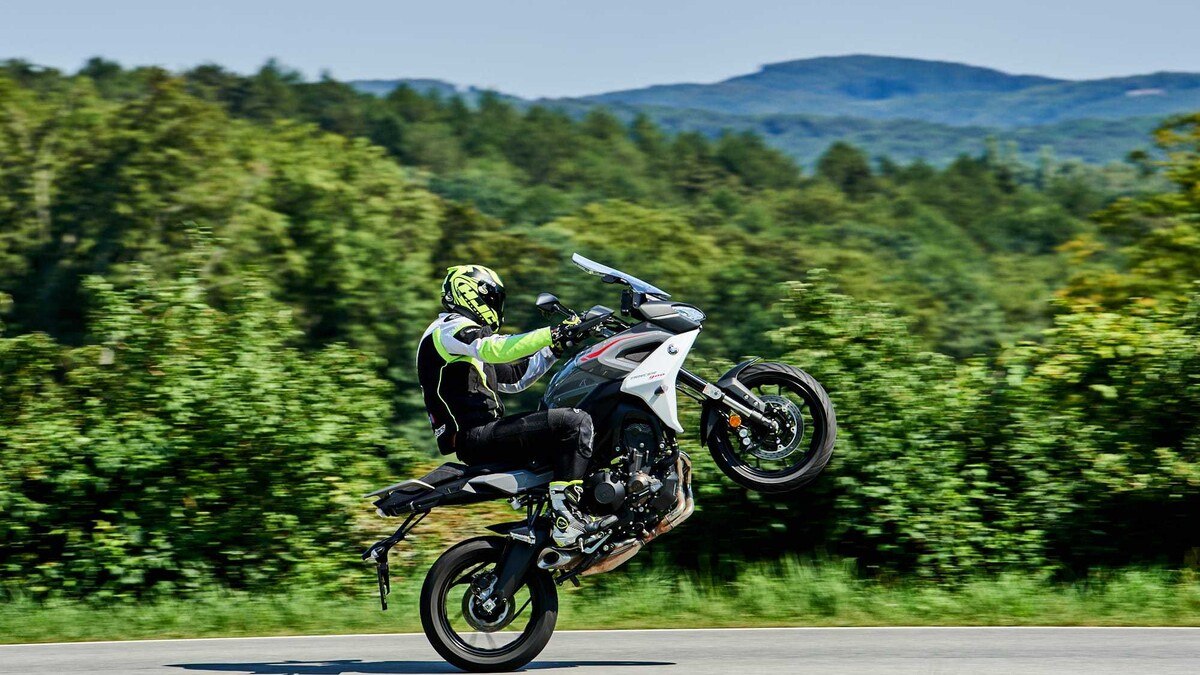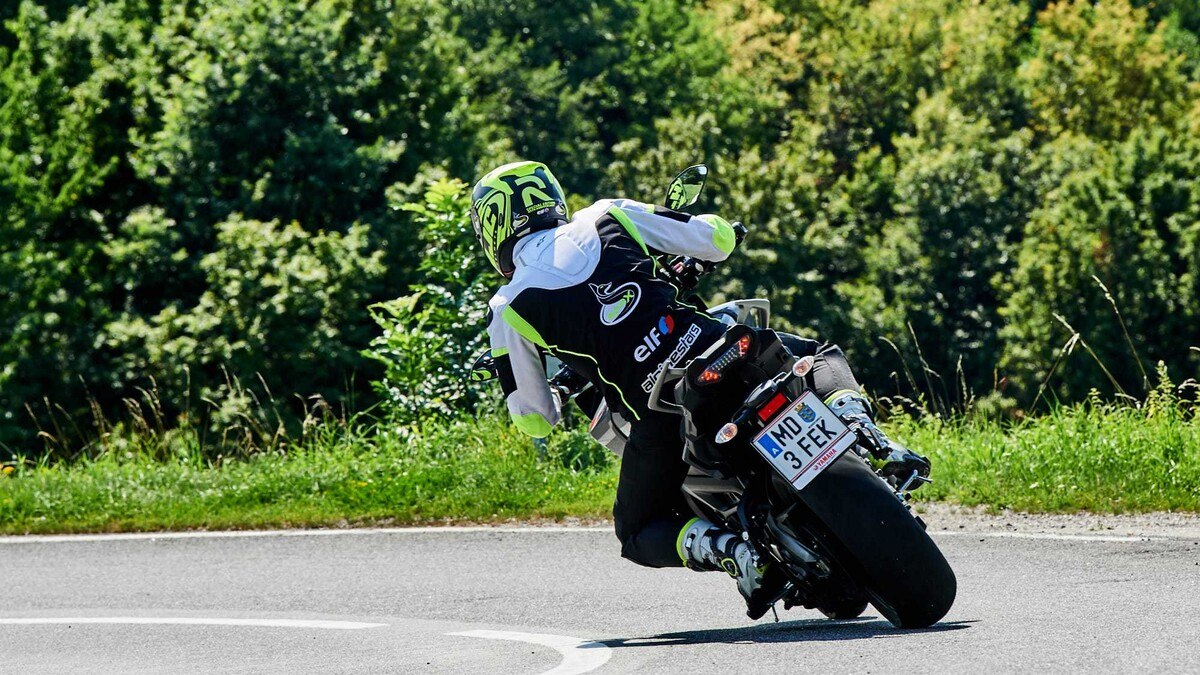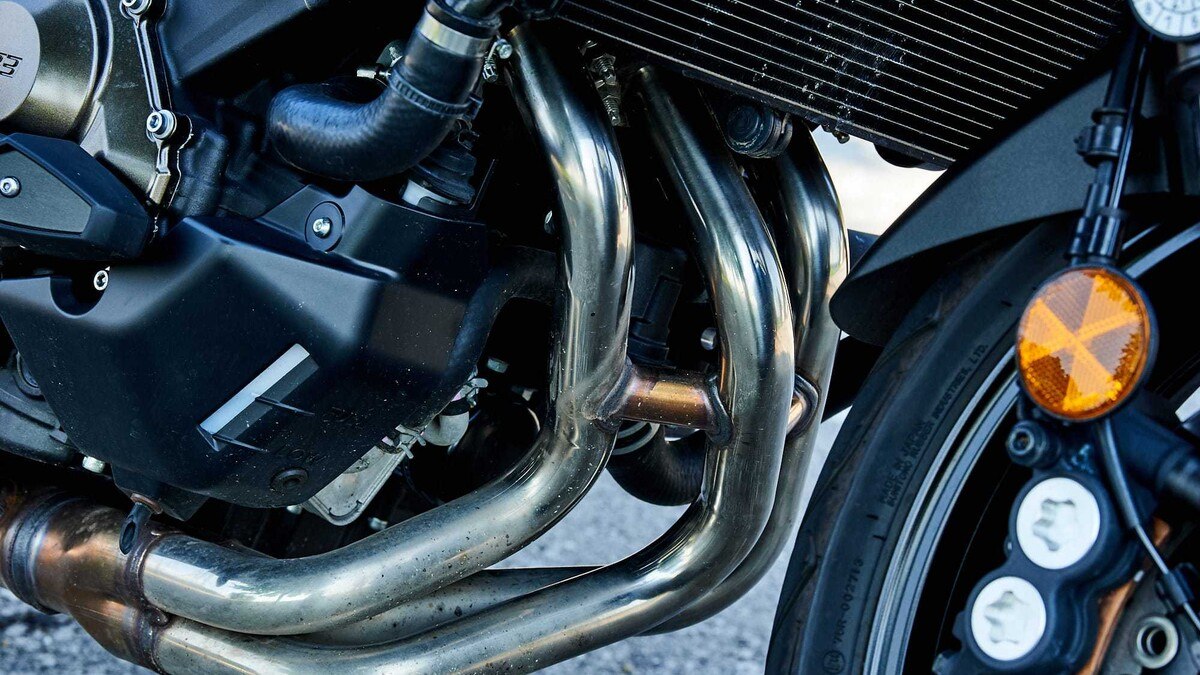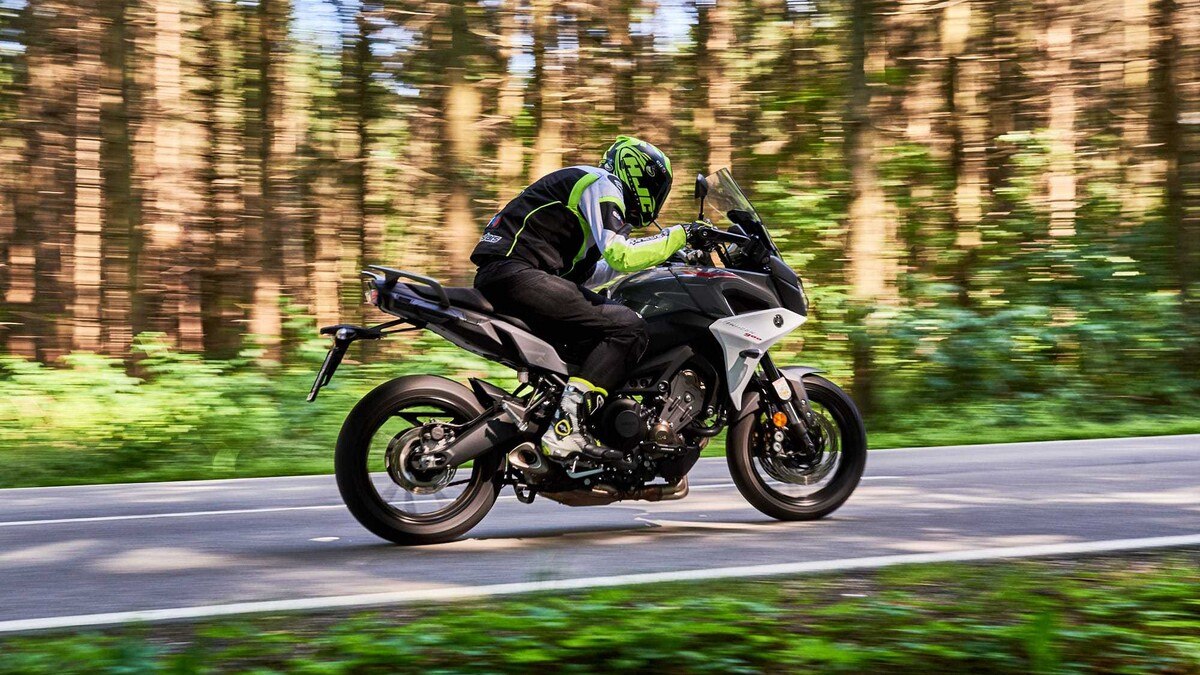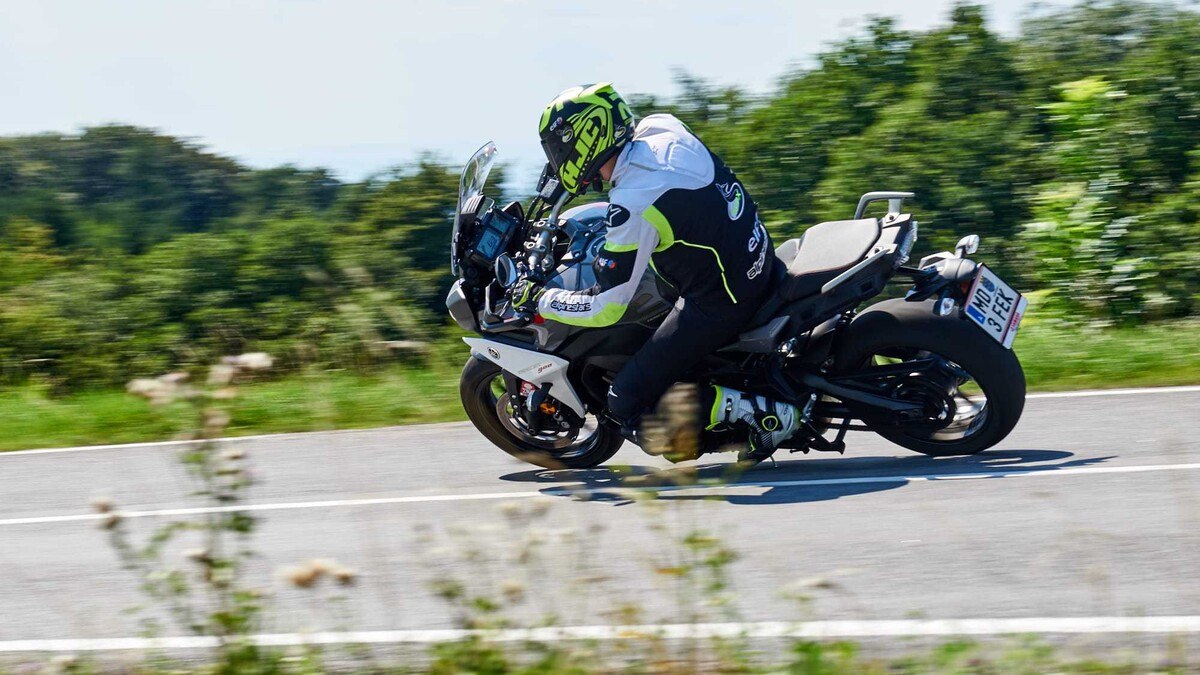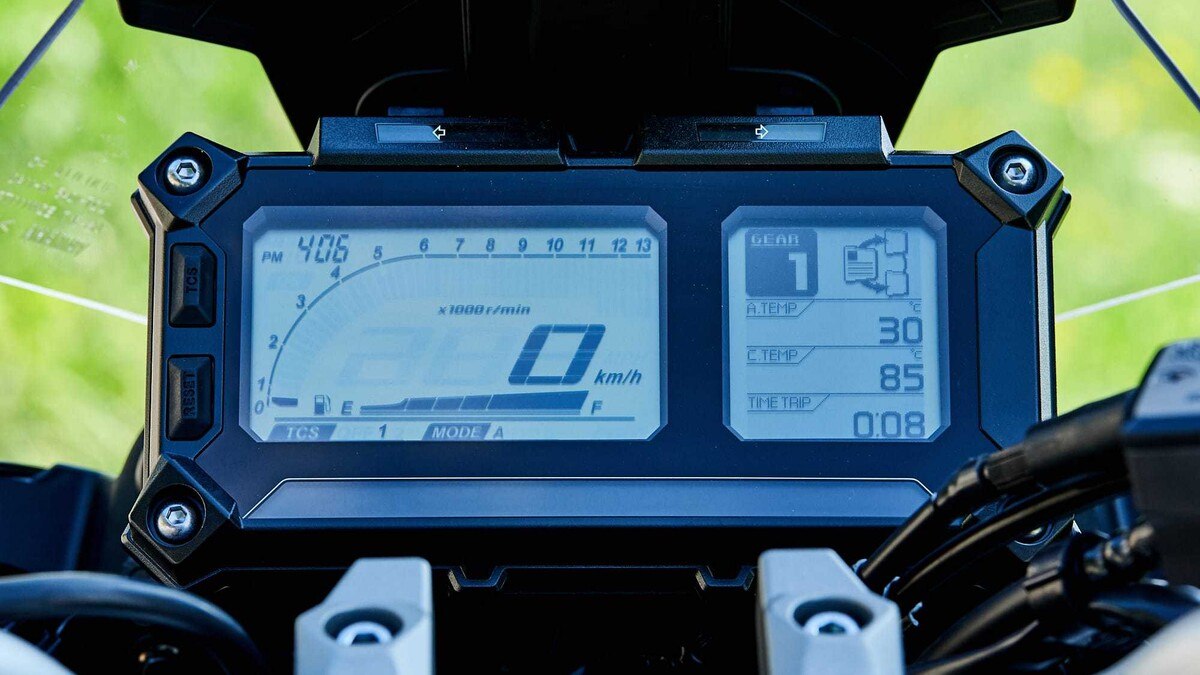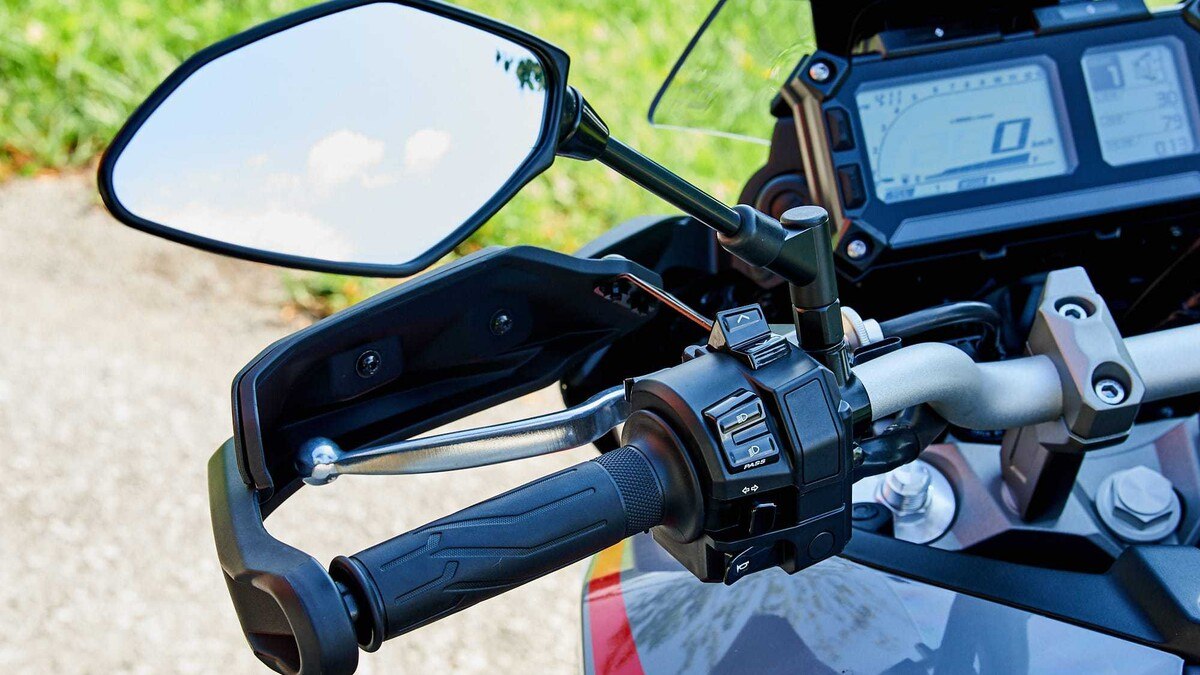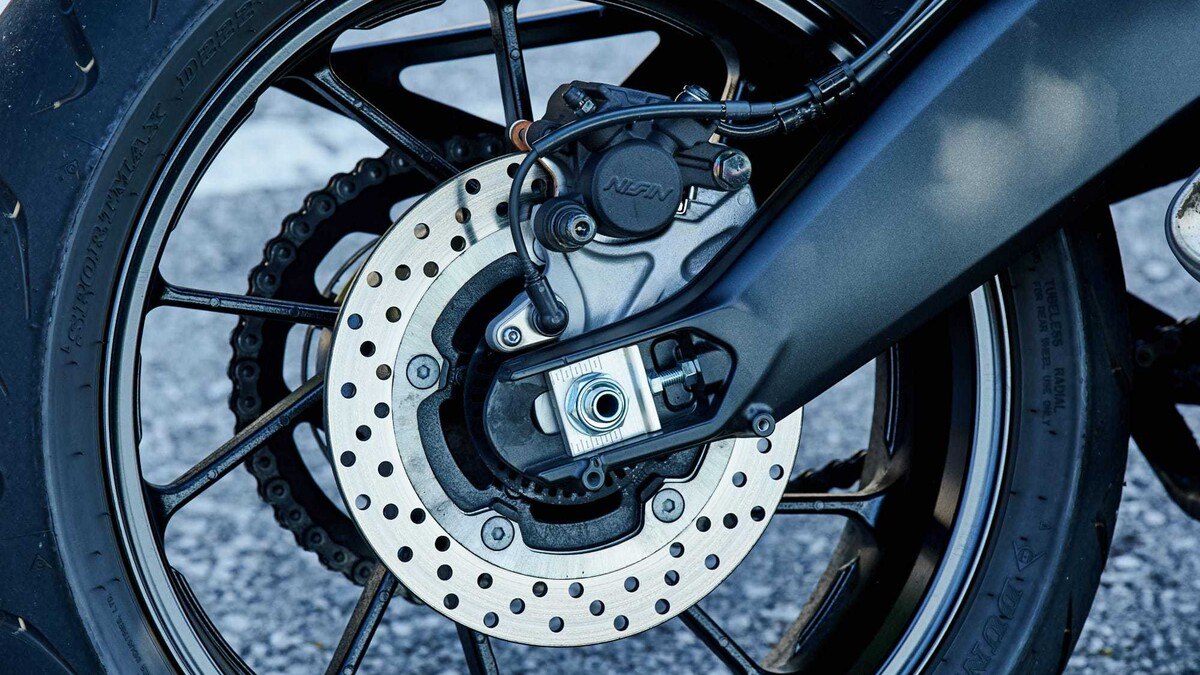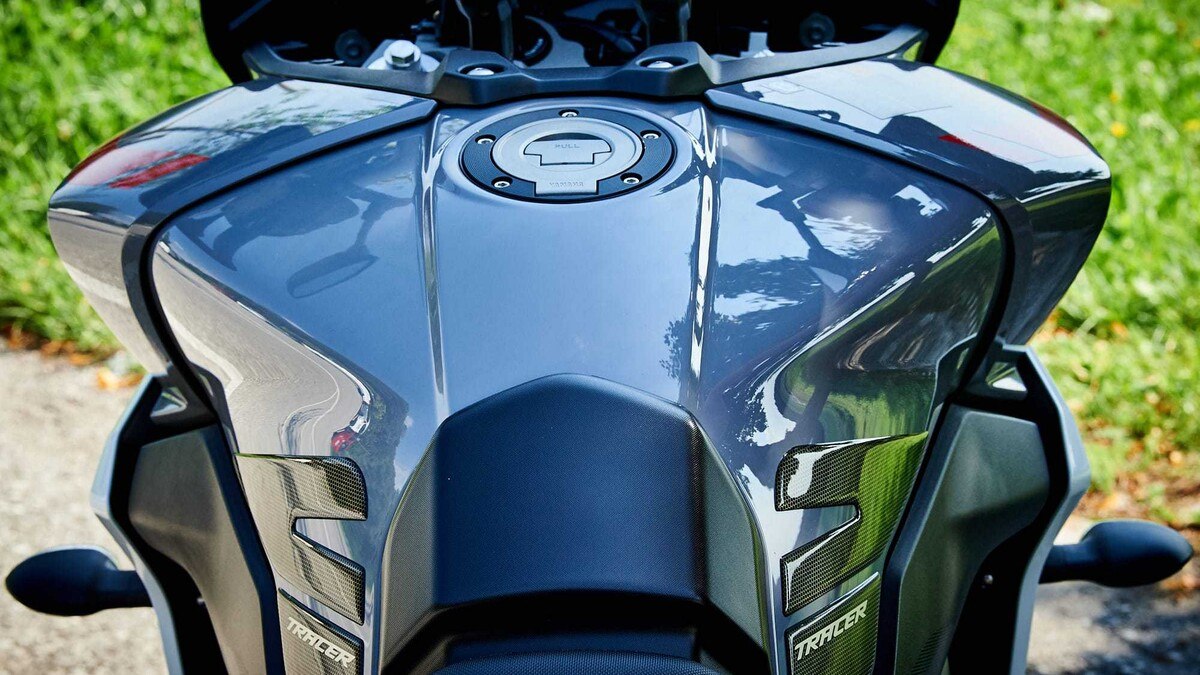Test Yamaha Tracer 900 - The naked touring supermoto
Before every test, I ask myself two questions: What helmet and outfit do I wear for the driving photos? Depending on whether it's a leather one-piece, MX helmet or Kevlar jeans, I try to give the reader an impression of what the bike is intended for. With the Yamaha Tracer 900, the two-wheeler segments blur together so much that I would almost like to say: the one for all.

Test Yamaha Tracer 900 - The naked touring supermoto
ergonomics
At first glance, the Yamaha Tracer 900 looks like a travel enduro with road tires, a compact stilt athlete. In fact, it is more of a naked bike than a touring moped. At least in terms of ergonomics. The handlebars are not overly wide and pleasantly cranked, the seating position is upright, and the knee angle is relaxed. You sit nice and centrally, partly in and partly on the Yamaha. Noticeably less aggressive than on the Yamaha MT-09. Whereby I have the sitting position of the MT-09 I don't find it typical for a naked bike. Doesn't matter. In short: you sit really well on the Tracer 900. Active, but not overly motivated. The windshield does what it is supposed to: provide slipstream without obstructing visibility. Pleasant: The good connection from the lower body to the bike. The seat is pleasantly comfortable and offers enough feedback. A straight A when it comes to ergonomics.
Handling
One thing first: I'm not a huge fan of the Yamaha MT-09, as I was never 100 percent warm to the handling of the naked bike. Ultimately, I didn't have the feedback to approach the rubber's adhesion limits with a clear conscience. It took courage, which I only explored on closed routes. On the road, I really lack speed in the MT-09 saddle. Completely different with the Tracer 900. It may be based on the MT-09, but it feels completely different. The idiosyncratic steering behavior of the naked bike does not exist in the Tracer saddle. The Yamaha turns beautifully neutrally over the front wheel and offers a lot of feedback. Because the handlebars are not too wide, you always have the feeling that you are in control of the grip level of the front wheel rubber. This neutrality creates a high level of trust after just a few corners. Changing direction is child's play after a short period of getting used to it. A little pressure on the handlebars and the Tracer 900 settles gently into the curve. She is neither hyperagile nor stubborn, but rather neutral in the truest sense of the word. It makes no difference whether you are driving on narrow, slow mountain passes or fast, wide curves on the motorway. The Tracer 900 does not experience high-speed commuting.
Engine/transmission
The 847 cubic three-cylinder engine is a real force on country roads. With 115 hp and almost 88 Newton meters of torque, you always have enough power and can easily cruise through the city even when you're lazy. The three-cylinder engine acts smoothly and can be easily controlled. The bite of the MT-09 has been softened, but the first application of the throttle is still not perfectly coordinated - for me. Although it seems significantly better than back then with the MT09, the feedback on the first throttle could be a little more linear, especially when riding the rear wheel. Depending on the mode, the throttle response can be easily adjusted via the left handlebar control. The transmission presents itself unspectacularly well, the anti-hopping clutch works well and the gear changes are quick and precise. In short: The drive is ideal for leisurely touring riders as well as for hard-hitting home route riders. If necessary, the power is reduced via traction control. But with some feeling in your right wrist, this is hardly necessary. Consumption was surprisingly low.
Undercarriage
The first impression of the chassis is unremarkable. It dampens well, responds cleanly, not bony, and passes on enough of the road to become increasingly faster. Of course the fork dips a bit when braking hard, of course the shock absorber starts to sway a bit when you're going at a very fast pace, but basically the Tracer 900 is always solid and well balanced on the road. The fork is adjustable (preload and rebound), the shock absorber is also adjustable in preload. Only when the rider is very motivated and enters the curve late, brakes really hard and also comes out of the corner hard, do you reach the limits of the standard chassis. Then the shock absorber starts pumping and the fork becomes softer and softer. But then the Tracer 900 rider is already in an area where the footrests are dragging in every corner. The lean angle is sufficient, but could basically be a little higher.
Brakes
A double disc, each with a diameter of 298 mm, and radial brake calipers ensure a safe standstill at the front. The ABS is not ultra-fine but absolutely sufficient for everyday use. The control intervals could be a little shorter and the pumping of the brake lever less, but that is completely satisfactory for this class of motorcycle. The feeling on the brake lever is good, the pressure point remains crisp for quite a long time. Only when driving at a very brisk pace does the brakes ease a little and fading becomes noticeable. There is hardly any righting moment when braking. Good for late brakers who want to anchor up to the top. The rear brake excelled, especially in the city. The 245 mm disc stops safely and doesn't squeak, and the dosage is perfect.
Noticed
That the Tracer 900 drives completely differently than its sister MT-09 - better, more neutral, more balanced. It is the more harmonious overall concept that is more suitable for everyday use. The good workmanship.
Failed
The handguards simply don't deserve their name, you don't want to have an accident with the delicate plastic parts. The optics of the Tracer 900 are debatable.
Test result Yamaha Tracer 900, by p.bednar
More information about Yamaha Tracer 900
With kind support from TOTAL Austria
More action photos from the test drives can be found on Instagram: apex_moto_at
Or follow us on Facebook: Apex Moto

 Suche
Suche
 Mein Konto
Mein Konto
